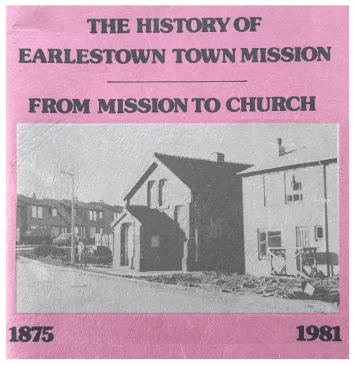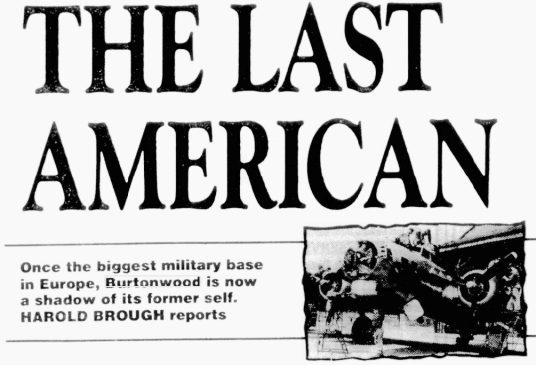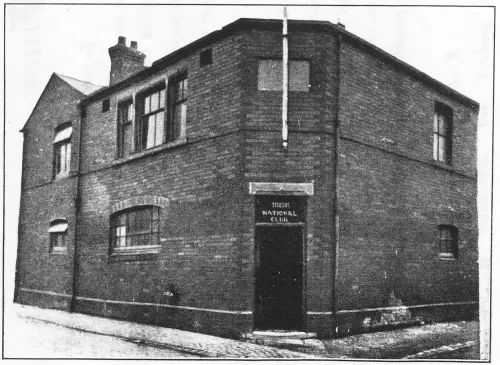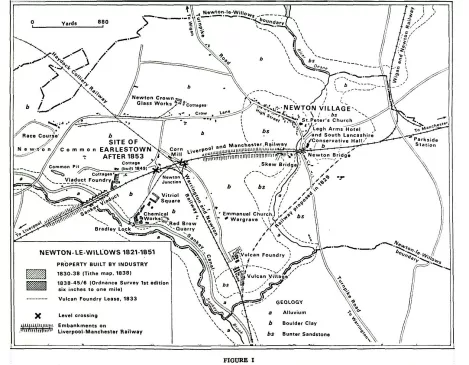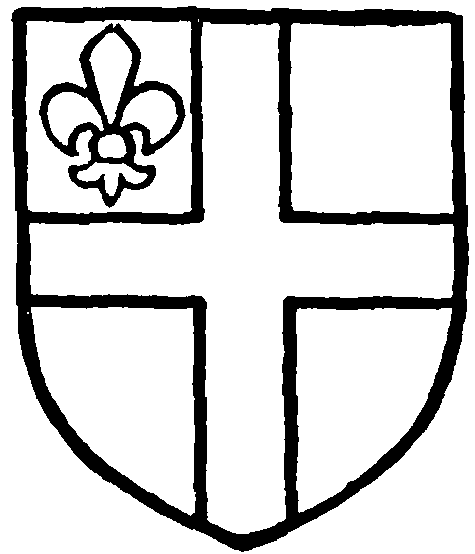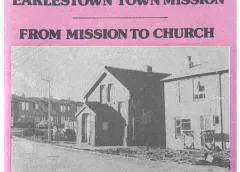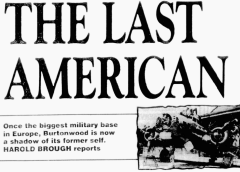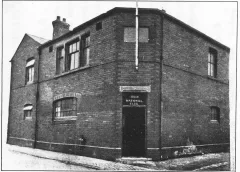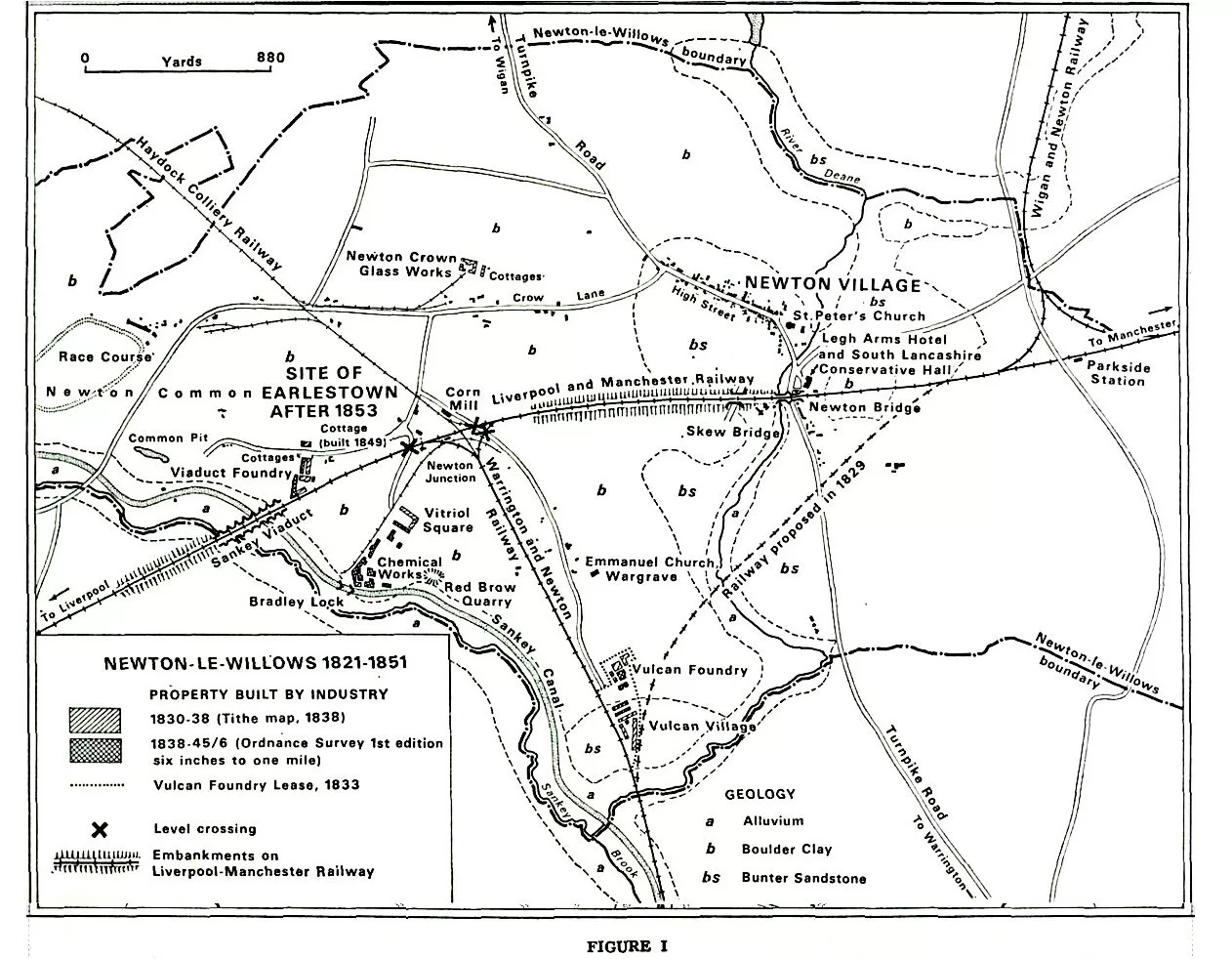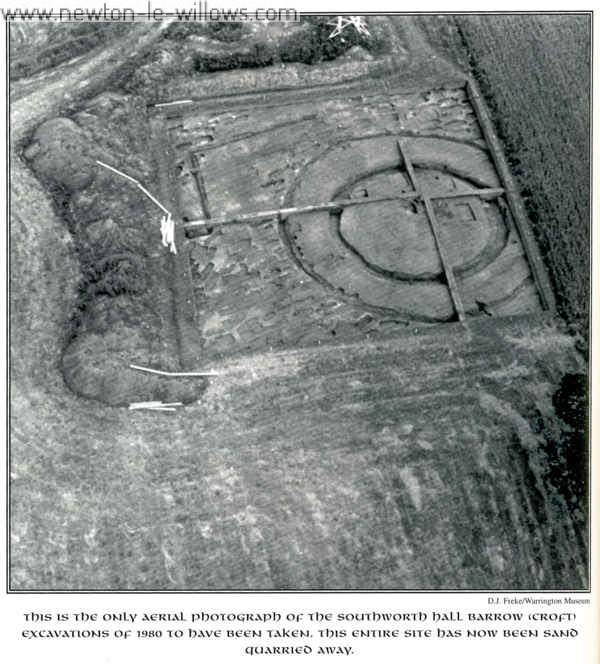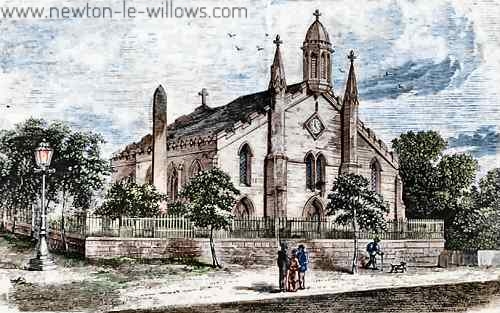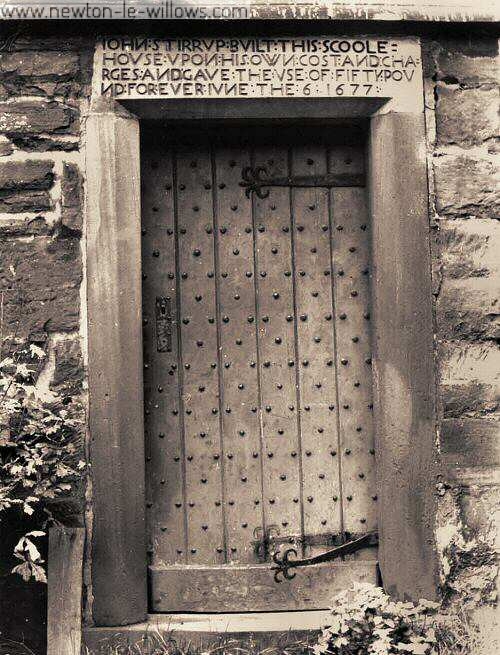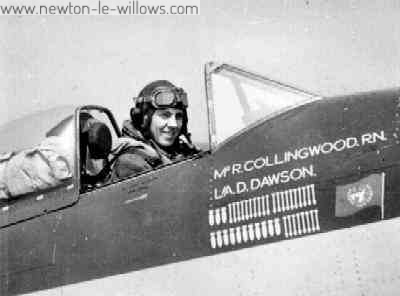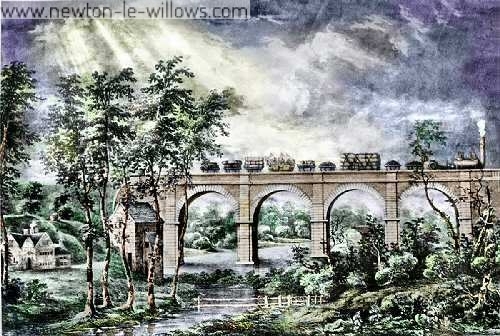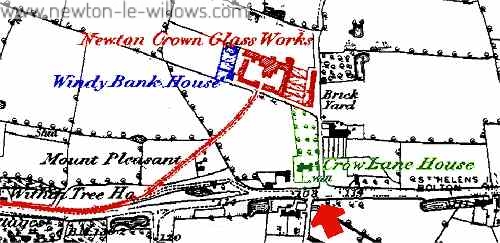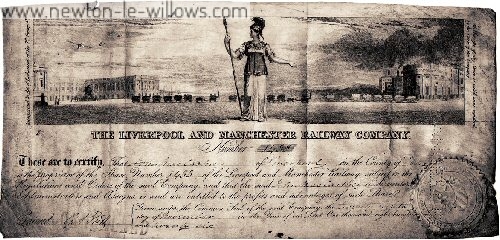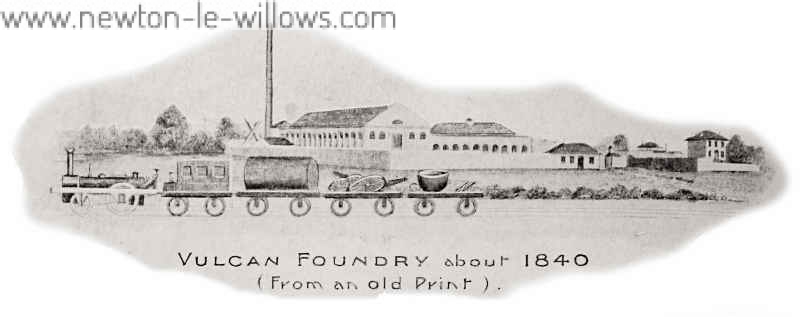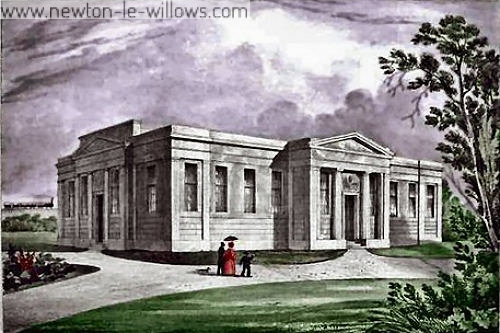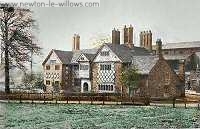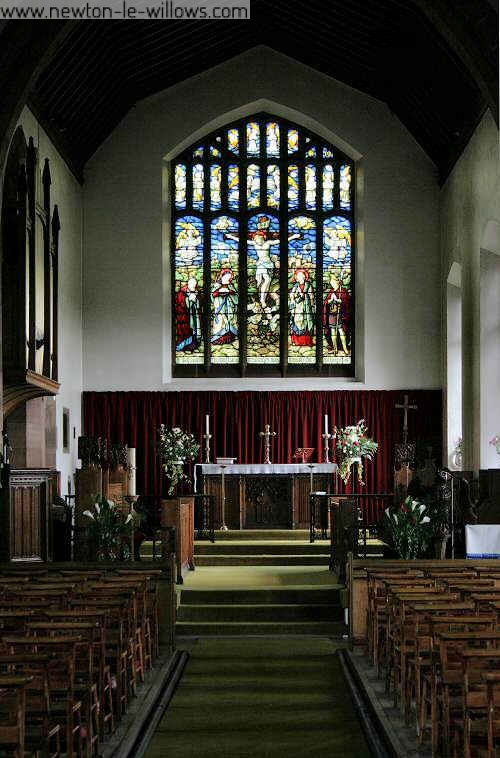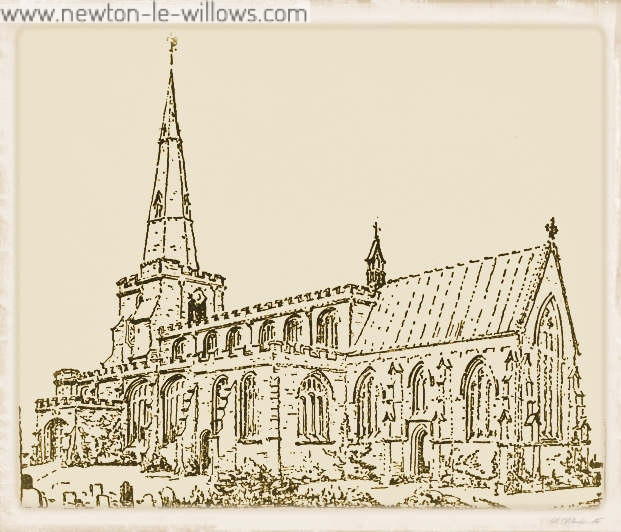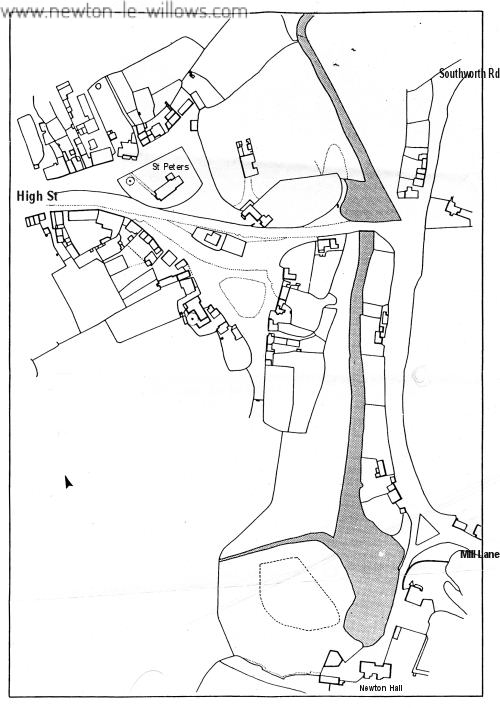And now let us take a walk round Earlestown and Newton and see what it was like about 1890. Immediately to the left of Earlestown Station was a large open space where the shops now stand and which was a common playground for the youth of the neighbourhood. That side of the street has changed very little, except that the shops at the top have all been altered and had new fronts put in to meet changed conditions. On the other side, starting at the bottom, there was Mr. Attfields…
Read More >>Southworth Burial Mound
Southworth Burial Mound Take Myddleton Lane (the ‘Eastern avenue’ off the Winwick mound) out of Winwick towards Culcheth and it will lead down the ley line towards Croft where it becomes Southworth Lane as it passes the ancient Southworth Hall over the M6 motorway. In the fields to the right Victorian Historical Journals from the Warrington Historical Society mention there may have been the burial mounds though these are now lost being ploughed flat, and in the field to the left on the Newton side, between the motorway and Southworth…
Read More >>St Peters Church
Below are a few images that show some of the many changes made to St Peters over the years. St Peters Church (approx 1835) This picture of St Peters is from about the year 1835 and clearly shows the Church without its bell tower, also visible in this image, standing to the left side of the church is the obelisk which was later removed to the centre of Earlestown Market, where it still stands. St Peters Church (approx 1910) In this lower of the two images you can clearly see…
Read More >>Dean School, Newton-le-Willows
Details relating to its early history and later domestic use were discovered during the course of this research. Information about its builder and later residents will also be considered, along with some details about the Dean School Trust set up by the original builder of the property. THE FOUNDATION OF THE SCHOOL Dean School, or Dene School, was founded in 1677 by John Stirrup.(1) The building was erected on a piece of barren land.(2) The date of construction is cited on an inscription that was over the front entrance to…
Read More >>AirCrash – Supermarine Attacker – 05/02/1953
Supermarine Attacker FB.1 WA535 – 05/02/1953 On Thursday 5 th February 1953 Mr Roy Edwin Collingwood (all commissioned Pilots were known as Mr) took off from Royal Naval Air Station Stretton ? ?HMS Blackcap? near Warrington in Supermarine Attacker FB.1, No WA535 on what was to be his 3 rd ?Famil? (Familiarisation) flight at 15:30 hours. At 15:32 hours he was given ?Go? on Channel Baker, and at 15:37 hours he was called up by Mr Lines, who was then flying a Meteor aircraft. In the course of a short…
Read More >>Newton-le-Willows
To my heart there is no dearer spot upon earth, Than Newton-le-Willows, the place of my birth! Oh! The world has allurements to tempt us to roam, But it cannot supply the endearments of home. Dear Newton! Ill sing of thy sylvan retreats, Of thy lanes, and thy tree-shaded dwellings and streets, Of thy bridge oer the brook with its vista of bloom– A vision of beauty and store of perfume! I will sing of thy ancient, historical hall Near the old ruined mill with its miniature falls The strangers…
Read More >>Newton Glass Works
This Shows the location of the Glass Works In relation to Crow Lane, The Glass works (red) stands on the site where we know have the Fire Station, Opposite is the Brick Works, Windy Bank House (blue) is still standing, but all of the Glass Works or its Railway line are both long gone. This as far as I can tell is the only image that exists that shows anything of the Glass Works, you can see to the right of this image, in the distance the bottle shaped kilns…
Read More >>The Liverpool & Manchester Railway
The Cotton Trade In the latter part of the eighteenth century, the area surrounding the port of Liverpool and the growing town of Manchester was rapidly expanding. The American colonies had played a large part in promoting Liverpool as the port of import, and Manchester as the finishing centre for their cotton. Liverpool also dealt with the importation of rum, tobacco and slaves as well as establishing itself as the chief trading port with Ireland ? importing yarn which was then sent to Manchester. As an example of the enormous…
Read More >>A history of the Vulcan Foundry
In September, 1830, the Liverpool and Manchester Railway was opened, and to digress, here is a brief account of the ceremony. Being one of the first passenger lines in the country, its development must have had a profound influence on the policy and prosperity of the Vulcan Foundry, and the Locomotive industry as a whole during its early years, apart from its interest to all dwellers in South West Lancashire in its effect on the industrial life of the district. T. & S. Stone. The original stone inscribed T. &…
Read More >>South Lancashire Conservative Association
The South Lancashire Conservative Association has scarcely been founded three years, and yet during that short period it has enrolled as members all the talent, wealth, and influence of that portion of the palatinate from whence it takes its name. To perpetuate the society a building for the accommodation of its members has been erected since the last anniversary dinner, which is at once the most prominent object in the town of Newton, and we trust will be a lasting monument of the good old English feeling which raised it.…
Read More >>Newton Hall : Archaeological Excavation
I tried as best I could to get video of Mark Adams giving details of what they had found in their excavation, and some video of Stan & John Boydell explaining the layout and uses of the various buildings; Please remember these clips are not edited at all, i have about 2 hrs of different clips from different days that i managed to visit the site, and I hope that when it’s all put together, I will end up with a little fly on the wall type documentary of the…
Read More >>The Lake – Poem by J H Lane
I. FULL sixty years ago, a pretty vale (Now hidden neath the waters of the lake) Extended, in a winding course, from where The railway arches span the road and brook, To Castle Hill, and thence, diverging, ran Eastwards to Golborne Dale, and westwards joined The little sylvan valley of the Dene. Adown each vale a rippling streamlet flowed, Which, at the hill commingling, journeyed on Twixt flowery banks, and murmured past the spot Where now the strong embankment separates The winding lake and willow-shaded brook, Until it reached the…
Read More >>St Peter’s Mission & All Saints Church, Crow Lane
To the Members of the Church of England dwelling at the Earlestown end of the Parish of St. Peter, Newton-in-Makerfield. DEAR FRIENDS, For your benefit we propose to hold. during the coming Winter and Spring, in the large room of the Mill Residence in Fairclough Street, to be entered from the Mill Yard by a new staircase 1. Divine Service every SUNDAY EVENING at 6-30; and also every THURSDAY EVENING at 8 o’clock, for which Prayer Books and Hymn Books will be supplied. 2. Sunday School every SUNDAY AFTERNOON from…
Read More >>St Oswald’s, Winwick Church
A FOREWORD It is with much pleasure that I commend this brief sketch of Winwick Church. To those who, like myself, have had the privilege of loving and living in Winwick, this beautiful Church stands on a little hill apart, not actually only, but ideally, for it possesses the atmosphere that comes from a long succession of devoted men and women whose worship and service have here been concentrated—the atmosphere that only comes where holy things have been loved and tended for many a day. In Mr. Pearce’s sympathetic outline…
Read More >>Newton in 1745
At this period the wages of an agricultural labourer were 10d per day without food, and 5d if his master provided him with meals. Carpenters and masons received ls 6d per day. The wants of the people, however, were few, and food was cheap, and a shilling had greater purchasing power than it has in the present day. In the early part of the 18th century the manufacture of woollens and of silk was encouraged, to the detriment of cottons and calicoes, and made rapid strides. Probably about this time…
Read More >>